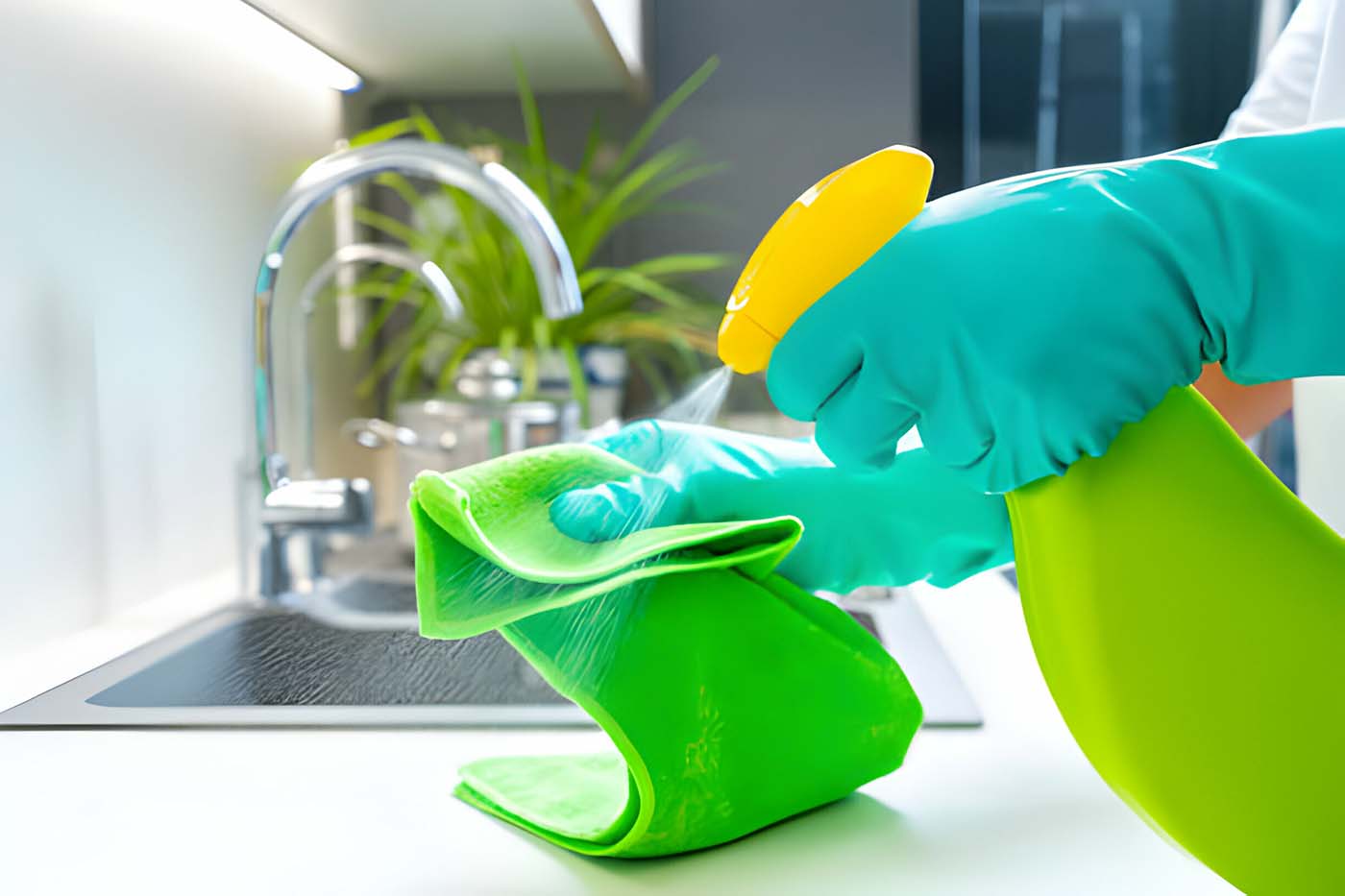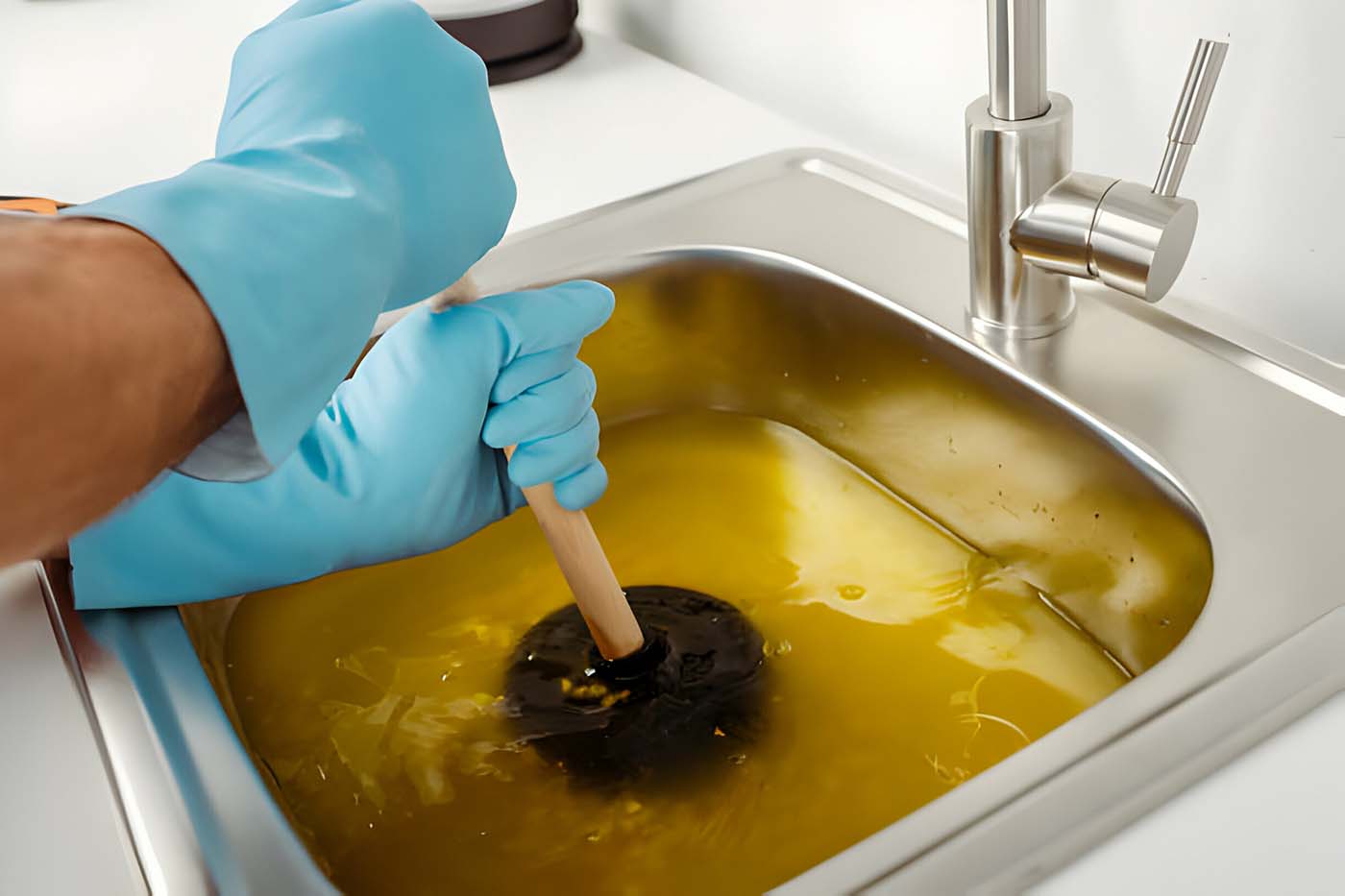Alright, let’s face it. There are few household odours quite as offensive as the pungent, nostril-tingling stench that wafts from a smelly drain. It’s the kind of olfactory assault that can turn even the hardiest of stomachs and send guests scampering for fresh air. But fret not, dear homemakers, for I come not just armed with wisdom, but with a battle plan honed through countless skirmishes with foul odours, and I’m here to equip you with the arsenal and strategies necessary to vanquish this malodorous menace once and for all. Let’s get to work on this guide to cleaning a smelly drain.
The first step in our odour-eliminating crusade is to understand the enemy we’re facing. Picture this: deep within the dark, damp recesses of your plumbing lies a veritable breeding ground for all manner of unsavoury substances. Bits of decaying food, clumps of hair, and slimy layers of soap scum accumulate over time, providing the perfect feast for a legion of bacteria. As these microbial hordes feast and multiply, they release gases with a potency rivalled only by the most foul-smelling concoctions known to humankind. And thus, the dreaded stench of the smelly drain is born.
But fear not, for we are not without recourse in our battle against this odorous adversary. Armed with the right knowledge and tools, we can wage war on foul smells with confidence and determination. So, grab your gloves, don your apron, and let’s dive headfirst into the fray.

Understanding the Stench
Before we dive into the nitty-gritty of cleaning, let’s take a moment to understand what exactly causes that unpleasant odour to waft from our drains. Typically, smelly drains are the result of a build-up of organic matter, grease, and bacteria.
Food particles, hair, soap scum, and other debris can accumulate in your drain over time, creating the perfect breeding ground for bacteria. As these microscopic critters feast on the organic matter, they release foul-smelling gases, hence the malodorous situation we find ourselves in.
The Power of Probiotics
While traditional cleaning methods like baking soda and vinegar are effective, some homeowners prefer a more natural approach. Enter probiotics – the friendly bacteria that can work wonders on smelly drains.
Probiotic drain cleaners harness the power of beneficial bacteria to break down organic matter and eliminate odour-causing germs. Simply pour the solution down your drain, and let the good bacteria work their magic.
Not only are probiotic cleaners environmentally friendly, but they also provide long-lasting results by establishing a healthy microbial balance in your pipes. So, if you’re looking for a greener alternative to traditional drain cleaners, probiotics may be the answer.
Tools of the Trade
Now that we know our enemy, it’s time to gather our weapons for the battle ahead. Fortunately, you won’t need anything too fancy to tackle a smelly drain. Here’s what you’ll need:
— Plunger
— Baking soda
— Vinegar
— Boiling water
— Wire brush or drain snake
— Rubber gloves
With these trusty tools at your disposal, you’ll be well-equipped to vanquish even the most stubborn drain odours.

The Plunge of Power
Let’s start with the simplest weapon in our arsenal: the plunger. This tried-and-true tool is incredibly effective at dislodging blockages and getting water flowing freely again. Here’s how to wield it with maximum impact:
— Fill the sink or tub with enough water to cover the head of the plunger.
— Place the plunger over the drain, ensuring a tight seal.
— Push and pull the plunger vigorously for 20-30 seconds, maintaining a strong seal throughout.
— Remove the plunger and test the drain by running water to see if the odour persists.
If the smell lingers, fear not. We have more tricks up our sleeves.
Baking Soda Blitz
Ah, baking soda – is there anything it can’t do? This humble pantry staple is a powerhouse when it comes to cleaning and deodorising, and it works wonders on smelly drains. Here’s how to use it effectively:
— Pour half a cup of baking soda down the drain.
— Follow it up with half a cup of vinegar.
— Cover the drain with a plug or cloth to contain the fizzing action.
— Allow the mixture to work its magic for 15-30 minutes.
— Flush the drain with boiling water to rinse away the residue.
This simple yet potent concoction will help neutralise odours and break down stubborn build-ups, leaving your drain smelling fresh as a daisy.
The Boiling Water Blitz
If you’re short on baking soda and vinegar, fear not – a kettle of boiling water can also work wonders on smelly drains. Here’s how to use this straightforward method:
— Boil a kettle full of water.
— Pour the boiling water directly down the drain in two or three stages, allowing a few seconds between each pour.
— Repeat the process two to three times to ensure thorough cleaning.
The scalding hot water will help dislodge grease and organic matter clinging to the walls of your pipes, sending them packing and taking their odours with them.
Going Deeper: Mechanical Methods
If the odour persists despite your best efforts, it may be time to bring out the big guns. A wire brush or drain snake can be invaluable for dislodging stubborn blockages and removing built-up gunk from deep within your pipes.
Simply insert the brush or snake into the drain and manoeuvre it back and forth to break apart any obstructions. Be prepared – this method can get a little messy, so don’t forget to don your rubber gloves and maybe even a splash-proof apron.
Prevention is the Best Medicine
Now that you’ve banished the foul odour from your drain, it’s time to implement some preventive measures to keep it from returning. Here are a few simple tips to help you maintain a fresh-smelling drain:
— Avoid pouring grease or oil down the drain – opt for a grease trap or dispose of them in the bin instead.
— Regularly clean your drain with baking soda and vinegar to prevent build-ups from forming.
— Use a drain strainer to catch hair and debris before they can cause blockages.
— Flush your drains with boiling water once a week to keep them clear and odour-free.
By incorporating these habits into your cleaning routine, you can ensure that your drains stay fresh and fragrant for the long haul.
Conclusion
And there you have it – a comprehensive and meticulously detailed guide meticulously crafted to banish the funk and reclaim your drain from the clutches of odorous despair. Armed with the arsenal of knowledge and techniques meticulously outlined above, you’ll never again find yourself enduring the indignity of a smelly drain invading your sanctuary.
So, with newfound wisdom firmly in hand, stride forth, dear readers, and let the waters flow freely and fragrantly through your pipes once more. Let not the specter of unpleasant odors haunt your home, for you now possess the power to vanquish them with ease and confidence. Your olfactory senses – and the esteemed guests who grace your abode – will undoubtedly sing praises of gratitude for your proactive measures in maintaining a pristine environment.
In this journey toward olfactory nirvana, remember that consistency is key. Regular maintenance, coupled with the insights gleaned from this compendium of drain-saving wisdom, will ensure that your drains remain unsullied and your living space perpetually fresh. So fear not the stench that once plagued your domicile, for you are now armed with the knowledge and expertise to keep it at bay indefinitely.
Go forth, dear readers, and revel in the newfound clarity and sweetness emanating from your once-troubled drains. Your nose – and indeed, all who venture into your domain – shall forever be grateful for your dedication to maintaining a home that is as delightful to the senses as it is to the soul.








